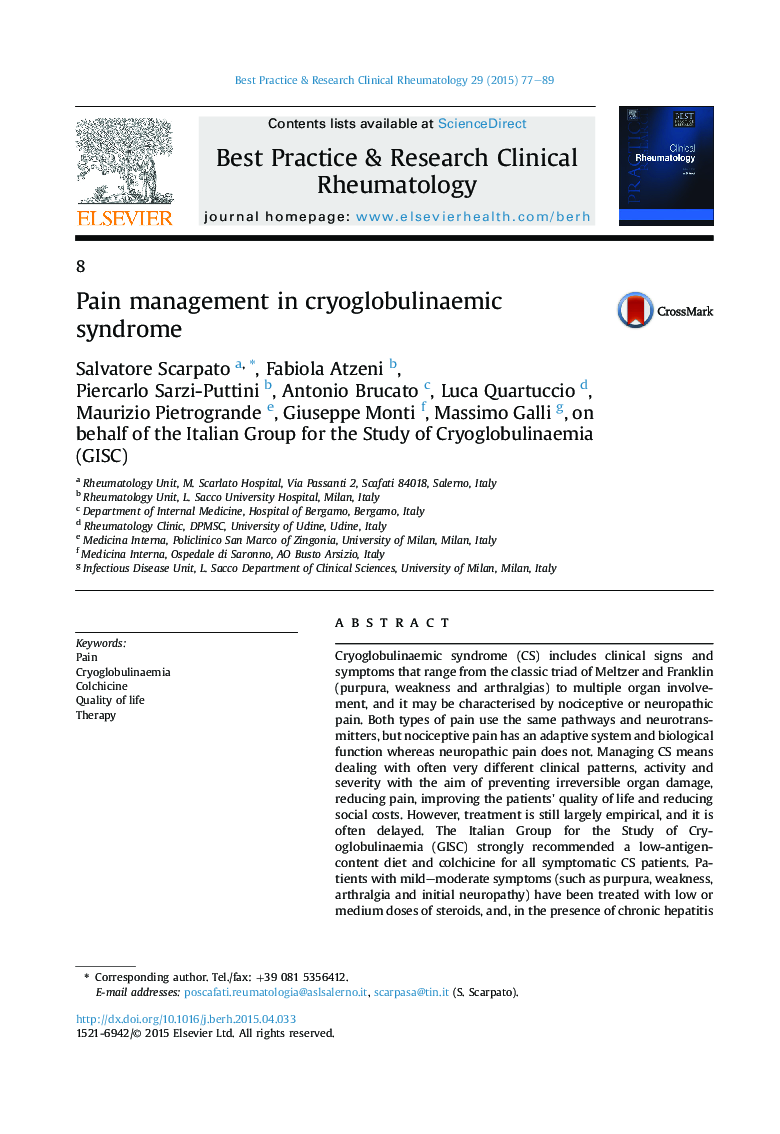| کد مقاله | کد نشریه | سال انتشار | مقاله انگلیسی | نسخه تمام متن |
|---|---|---|---|---|
| 3342953 | 1214387 | 2015 | 13 صفحه PDF | دانلود رایگان |
Cryoglobulinaemic syndrome (CS) includes clinical signs and symptoms that range from the classic triad of Meltzer and Franklin (purpura, weakness and arthralgias) to multiple organ involvement, and it may be characterised by nociceptive or neuropathic pain. Both types of pain use the same pathways and neurotransmitters, but nociceptive pain has an adaptive system and biological function whereas neuropathic pain does not. Managing CS means dealing with often very different clinical patterns, activity and severity with the aim of preventing irreversible organ damage, reducing pain, improving the patients' quality of life and reducing social costs. However, treatment is still largely empirical, and it is often delayed. The Italian Group for the Study of Cryoglobulinaemia (GISC) strongly recommended a low-antigen-content diet and colchicine for all symptomatic CS patients. Patients with mild–moderate symptoms (such as purpura, weakness, arthralgia and initial neuropathy) have been treated with low or medium doses of steroids, and, in the presence of chronic hepatitis C virus (HCV)-related hepatitis, an attempt has been made to eradicate HCV with pegylated interferon plus ribavirin. In the case of severe or rapidly progressive disease (glomerulonephritis, neuropathy, leg ulcers, widespread vasculitis or hyperviscosity syndrome), more aggressive treatment should be used (e.g., high doses of corticosteroids, plasma exchange plus cyclophosphamide or rituximab). Pain management in CS therefore depends on the type of pain (nociceptive, neuropathic or mixed), the characteristics of the patients and their co-morbidities. Drug therapy should be carefully monitored in order to obtain prompt and beneficial results.
Journal: Best Practice & Research Clinical Rheumatology - Volume 29, Issue 1, February 2015, Pages 77–89
